Underground metro is one of the biggest things that can help to elevate your city to another level. It is an effective type of transportation that can connect separate parts of residences, your center, industries, etc. Underground metro may be a little expensive (in comparison with above-ground metro), but it is significantly easier to integrate and as this article will show, it has its own benefits.
- cost much but is effective
- ideal for connecting districts
- is good for long distance traveling
- does not take up space on the surface
How to build underground metro in Cities Skylines?
Before you start to think about building a metro, it is important to be prepared for dealing with two things – money and population. As I mentioned above, the metro is super expensive, so have a lot of money aside. For that, focus on your population and its needs because a happy population means a lot of income to your treasury and so more space and options for building your metro system.
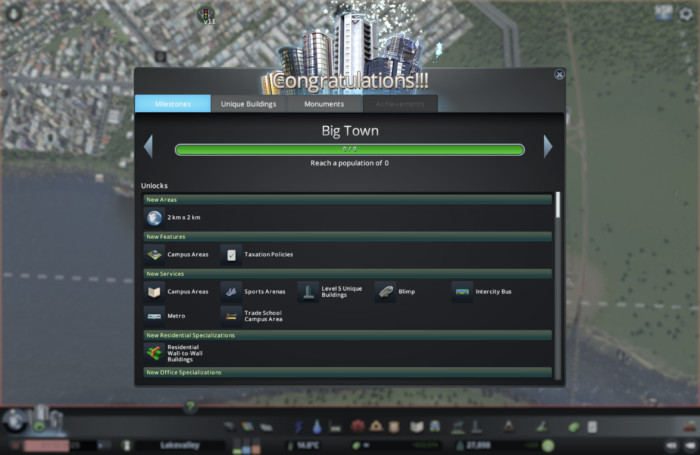
Another thing you need to do is to decide where to place the stations. You have two options. In the first option, you have a big city and you need to connect all of the parts together through a precise network. In this case, do a loop. In the second option, you have a city where you just can make a simple line forth and back.
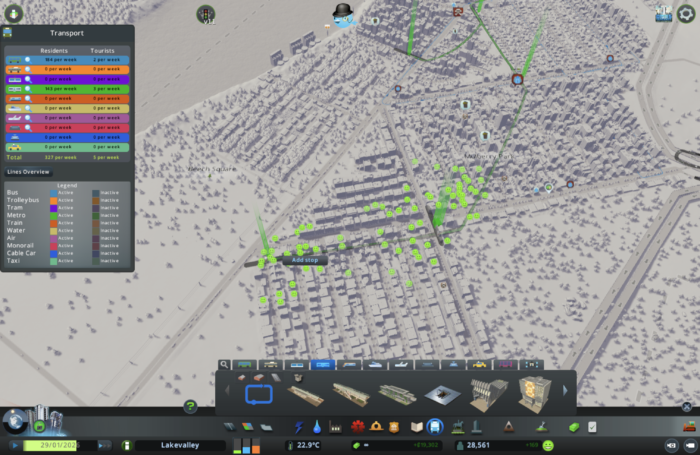
When building the metro station, it is essential to pay attention to the high density of your population and noise pollution. With high density, you need to check on your bigger residences and decide how many stations will be put there (high density areas mean 2-4 metro stations, industries typically one each). In case of noise pollution, the metro makes a lot of noise so I would recommend placing stations on the edges of residences to minimize effects if noise.
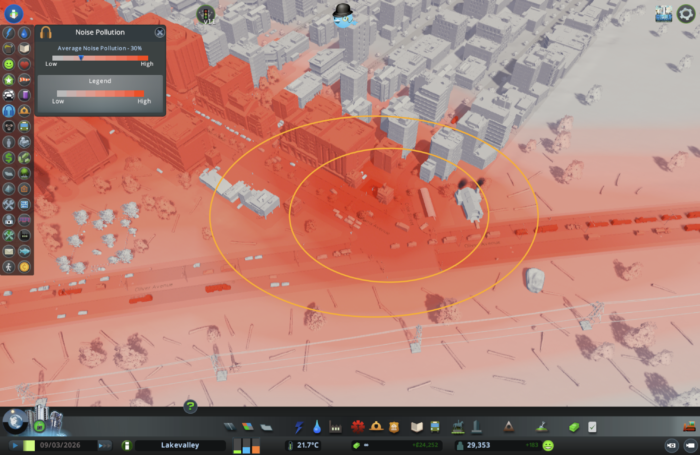
Now that you know all about the metro, we can start building. First you have to decide where to place the metro stations. This can be done by choosing Metro Stations in the Transport menu and then the Metro tab.
The second thing is building Metro Tracks. To do so, use the Metro Track tool to connect all your stations together. Tracks you should build underground or above ground. But is better to build metro in underground because it won’t take up space…
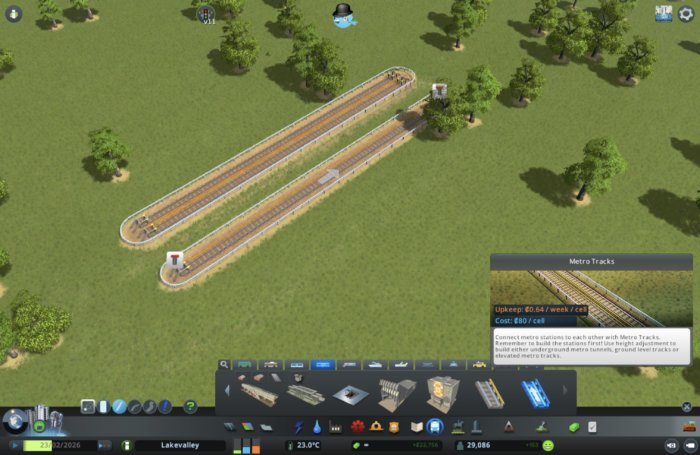
… if you need building underground you need to press page down button and also you should build metro in more layers. So you should have in first layer underground roads and in second layer you should have underground metro.
When all the metro stations are strategically placed and all the tracks are placed and connected with them, you have to assign the lines to each station. First, select the Metro Line tool and then click on the stations you want to include in the line. Do it counterclockwise and clockwise because it will make the transportation faster. Also remember that each line has to end where it started.
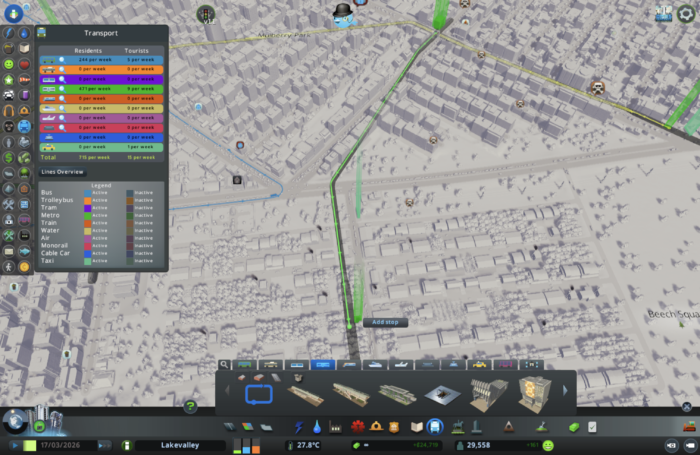
Right click on stations with lines remove them.
The last thing to do is to look at the line’s overview. There you can change their colors and rename them (for example, Metro Line 1 renamed to Line A, Metro Line 2 to Line B)…
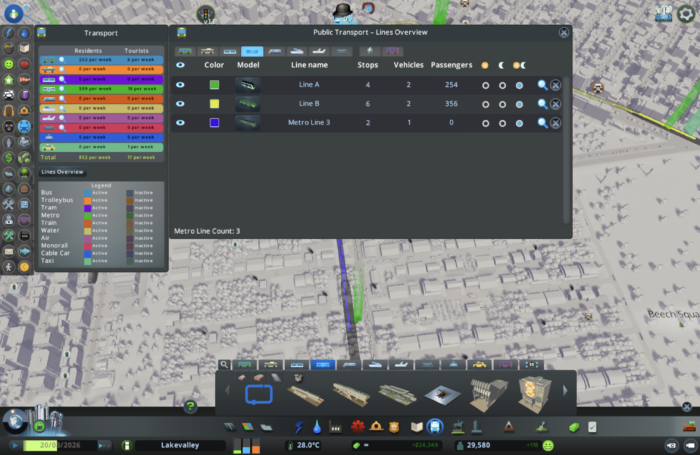
… also if you click on line details you should see more detailed stats about lines. Important there is “Vehicle count modifier” this slider could extend vehicles operating the line but it will cost you more.
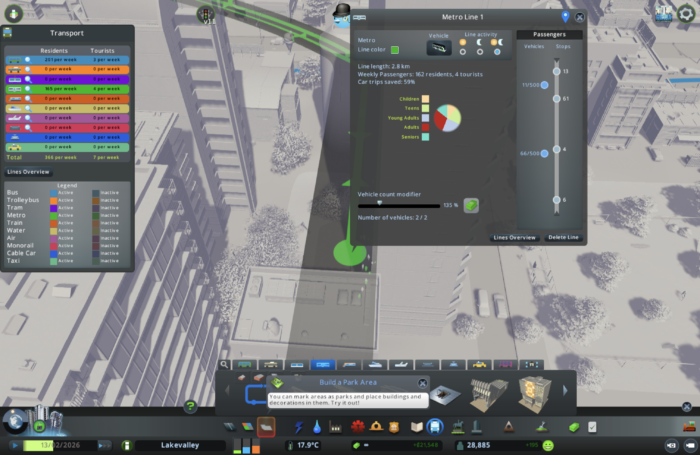
Why is the metro a good method of transportation?
As was indicated in the intro of this article, the metro can improve your city as a whole. It is also great for medium- or long-distance travel and it helps the right traffic flow.
In comparison with trains, the metro is better suited to medium-distance travel. Train tracks can be maybe cheaper, however, the noise pollution of the train is much higher. Metros are maybe quieter, their capacity is nevertheless lower (Metro 150 people, Train 240 people)
In comparison with buses, the metro is better for longer distances and it can connect a whole city. Buses are usually implemented for connecting only some parts. Moreover, buses can clog up the streets and bring traffic problems. Everything has its pros and cons.